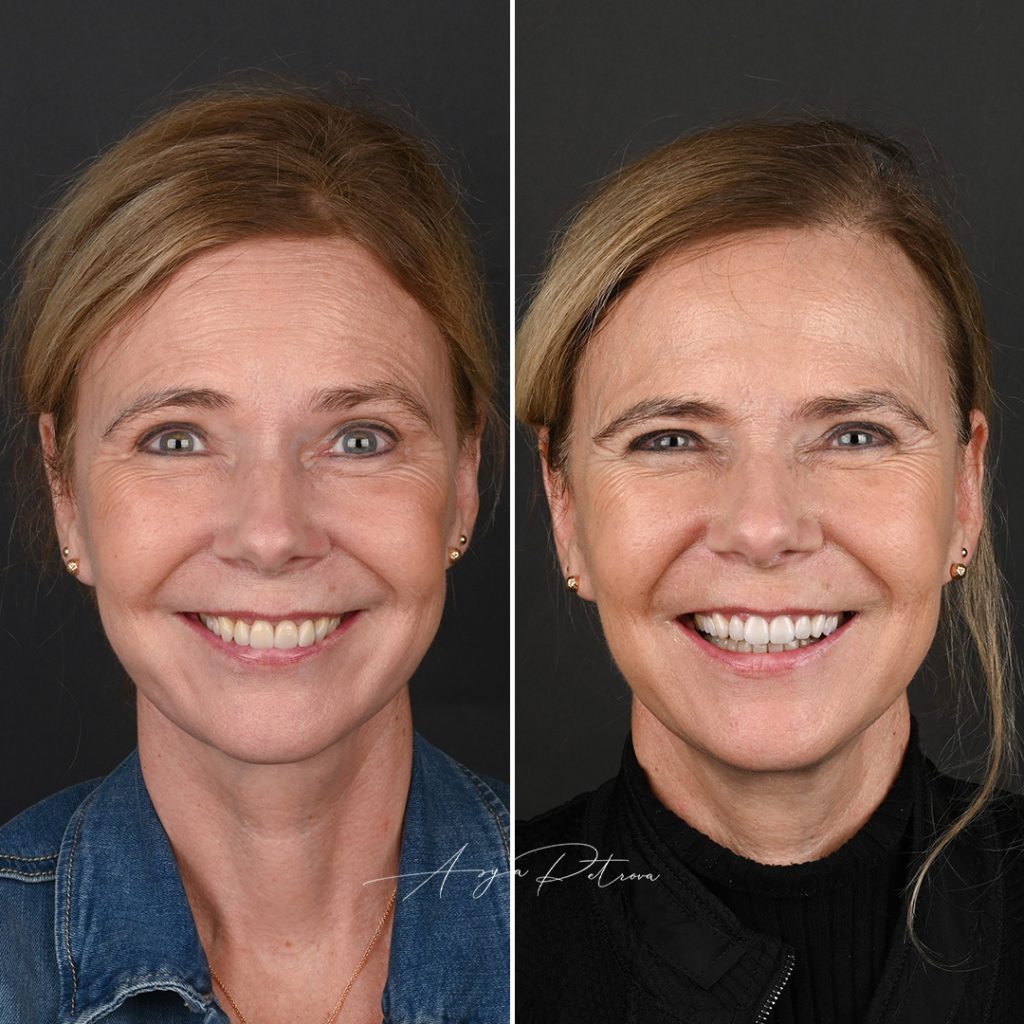
Porcelain Veneers
What are porcelain veneers?
Porcelain veneers are considered one of the most aesthetic treatments in contemporary dentistry. These thin shells of porcelain are custom-made to fit over the front of a patient’s existing teeth, in order to enhance the appearance of a discolored, chipped, misshapen, or misaligned smile.
Are porcelain veneers right for me?
A healthy smile is a beautiful smile. Before considering veneers, you need to make sure that you have a good oral hygiene, healthy gums and your bite is correct. Porcelain veneers are a great choice when you have stained or discolored teeth, chipped, cracked, worn down, irregularly shaped teeth or have multiple cosmetic issues.
Ultimately, the decision of whether porcelain veneers are right for the patient should be based on a careful evaluation of the dental needs and goals, as well as a thorough discussion with the dentist.
What are porcelain veneers?
Porcelain veneers are considered one of the most aesthetic treatments in contemporary dentistry. These thin shells of porcelain are custom-made to fit over the front of a patient’s existing teeth, in order to enhance the appearance of a discolored, chipped, misshapen, or misaligned smile.

Are porcelain veneers right for me?
A healthy smile is a beautiful smile. Before considering veneers, you need to make sure that you have a good oral hygiene, healthy gums and your bite is correct. Porcelain veneers are a great choice when you have stained or discolored teeth, chipped, cracked, worn down, irregularly shaped teeth or have multiple cosmetic issues.
Ultimately, the decision of whether porcelain veneers are right for the patient should be based on a careful evaluation of the dental needs and goals, as well as a thorough discussion with the dentist.
What are the steps for the treatment?
First visit is always a pleasant and relaxing conversation with your dentist. Your dentist will listen to you, your wishes and what brings you to the office. You will receive all the information about the process and the steps.
The consultation includes a general check-up, digital photos and a panoramic x-ray. Considering your wishes and expectations, a digital smile design is prepared before your next appointment.
DSD is a technical tool which is used to design and modify the smile of patients digitally and help them to visualize it beforehand by creating and presenting a digital mockup of their new smile design before the treatment physically starts. This gives the opportunity to the patients to be involved in their own smile design process, thus ensuring predictable treatment outcome.
During your next appointment a smile test is done directly in the mouth with composite samples, following the already approved digital smile design. This is called a mockup. The composite version is designed closely to the look of the final veneers.
Then it’s time for a relaxing photo shooting and a chat to discuss the new smile. On this appointment your beloved ones are always welcome so they can share the excitement of the smile makeover with you.
What are the steps for the treatment?
First visit is always a pleasant and relaxing conversation with your dentist. Your dentist will listen to you, your wishes and what brings you to the office. You will receive all the information about the process and the steps.
The consultation includes a general check-up, digital photos and a panoramic x-ray. Considering your wishes and expectations, a digital smile design is prepared before your next appointment.
DSD is a technical tool which is used to design and modify the smile of patients digitally and help them to visualize it beforehand by creating and presenting a digital mockup of their new smile design before the treatment physically starts. This gives the opportunity to the patients to be involved in their own smile design process, thus ensuring predictable treatment outcome.
During your next appointment a smile test is done directly in the mouth with composite samples, following the already approved digital smile design. This is called a mockup. The composite version is designed closely to the look of the final veneers.
Then it’s time for a relaxing photo shooting and a chat to discuss the new smile. On this appointment your beloved ones are always welcome so they can share the excitement of the smile makeover with you.
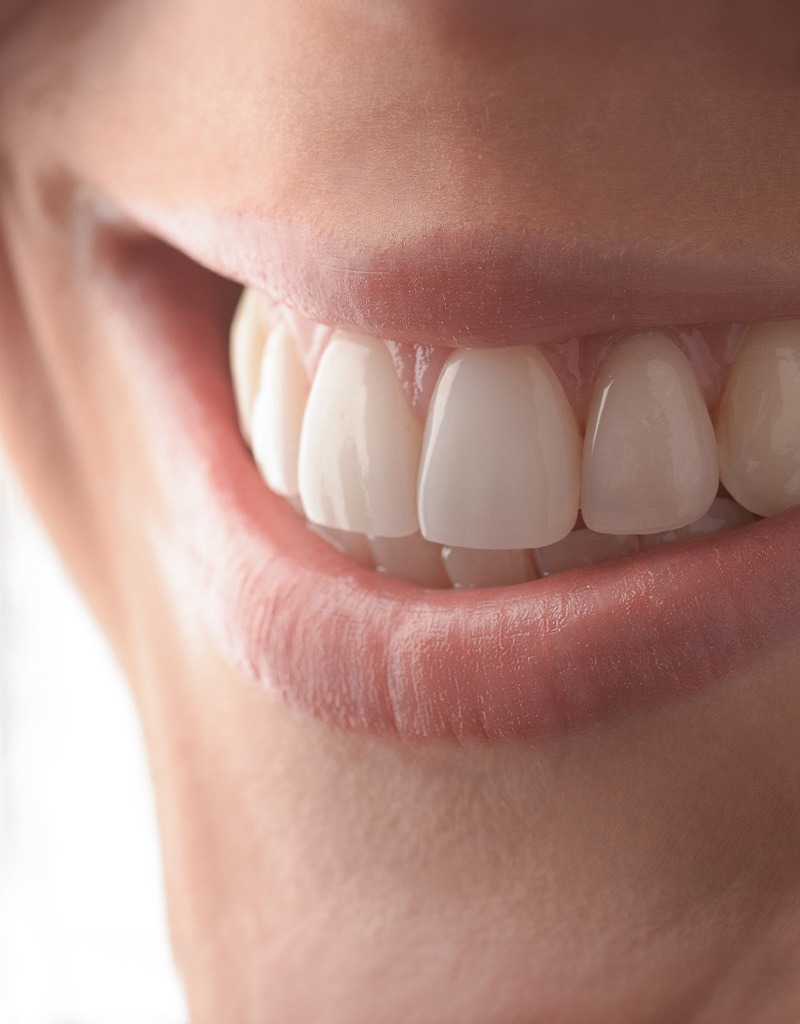
Benefits of porcelain veneers
While porcelain veneers can offer many benefits, it’s important to consult with a dentist to determine if they are the best option for the specific dental needs and goals. Some of these benefits are:
Improved appearance
Porcelain veneers improve the appearance of smiles that are discolored, chipped, misshapen, or misaligned. They can also close gaps between teeth and create a uniform and symmetrical smile.
Natural-looking
Porcelain veneers are custom-made to match the color, shape, and size of a person’s existing teeth, creating a natural-looking smile.
Minimal discomfort
Porcelain veneers are typically painless and can be applied in just two or three visits to the dentist.
Durability
Porcelain veneers can last for many years with proper care due to their durable materials.
Versatility
Porcelain veneers can be used to correct a variety of dental issues, making them a versatile cosmetic dental option.
Low maintenance
Porcelain veneers are easy to clean and maintain, and with proper care, they can last for many years.
How long do porcelain veneers last?
This can vary widely depending on your age, the condition of your oral health and how well you care for your veneers. If porcelain veneers are properly cared, they can last between 10 and 20 years, even more. Professional cleanings every 6 months and yearly exams are highly recommended. To help ensure the veneers last as long as possible, it’s important to:
• Maintaining good oral hygiene habits to ensure the health of the veneers.
• Wearing a mouthguard: When grinding the teeth at night, wearing a mouthguard can help protect the veneers from damage.
• Visiting the dentist regularly: Regular dental check-ups and cleanings can help ensure the veneers are in good condition and help detect any potential problems early on.
By following these tips, they can help ensure veneers last as long as possible and continue to enhance the appearance of the smile.
How long do porcelain veneers last?
This can vary widely depending on your age, the condition of your oral health and how well you care for your veneers. If porcelain veneers are properly cared, they can last between 10 and 20 years, even more. Professional cleanings every 6 months and yearly exams are highly recommended.
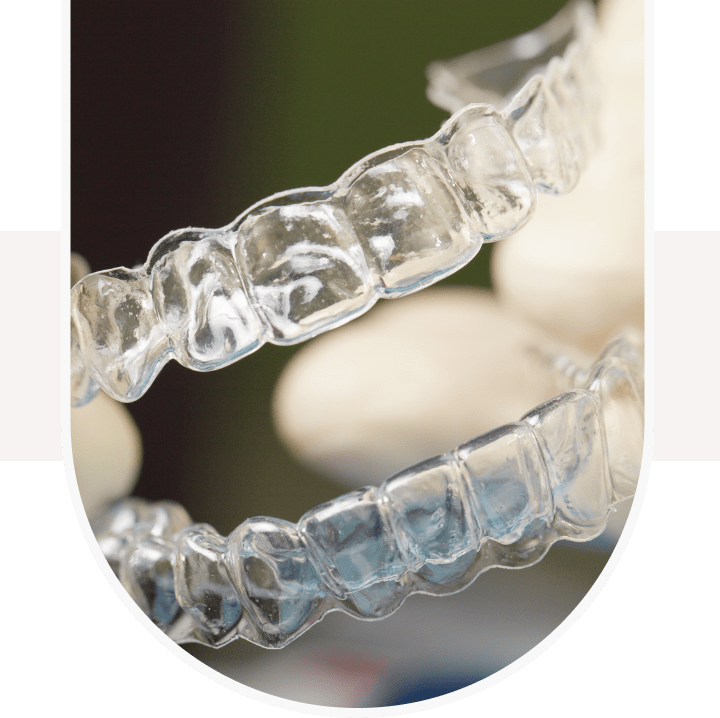
To help ensure the veneers last as long as possible, it’s important to:
• Maintaining good oral hygiene habits to ensure the health of the veneers.
• Wearing a mouthguard: When grinding the teeth at night, wearing a mouthguard can help protect the veneers from damage.
• Visiting the dentist regularly: Regular dental check-ups and cleanings can help ensure the veneers are in good condition and help detect any potential problems early on.
By following these tips, they can help ensure veneers last as long as possible and continue to enhance the appearance of the smile.
What should you expect after?
At this visit the teeth are shaped for veneers with minimal invasive dentistry protocols.
A digital scan is taken, and the dental technician receives the digital impression immediately. All the steps are digitalized which makes the procedures more pleasant and significantly reduces the time for elaboration. You will go home with temporary teeth looking as your future custom made veneers. They will be comfortable and aesthetic.
Excited for a brand new smile?
In less than 10 days, the porcelain veneers are ready for the final test. The veneers are fitted, pictures are taken and you have a discussion with your dentist for the last details. The dental technician is present as well to evaluate the new smile.
In case there are corrections to be made, the dental technician will make the adjustments during the same appointment, while you will enjoy a little break with a cup of fresh juice.
Once you approve the final look, the veneers are bonded in place. The veneers are bonded to the teeth with a composite using a very precise and detailed protocol, which guarantees their long-term success.
A check up is booked in one week to control the result and do the final pictures and videos. If you grind your teeth, a nightguard will be recommended in order to protect the veneers during the night. Regular checkups and cleaning are recommended every 6 months.
What should you expect after?
At this visit the teeth are shaped for veneers with minimal invasive dentistry protocols.
A digital scan is taken, and the dental technician receives the digital impression immediately. All the steps are digitalized which makes the procedures more pleasant and significantly reduces the time for elaboration. You will go home with temporary teeth looking as your future custom made veneers. They will be comfortable and aesthetic.
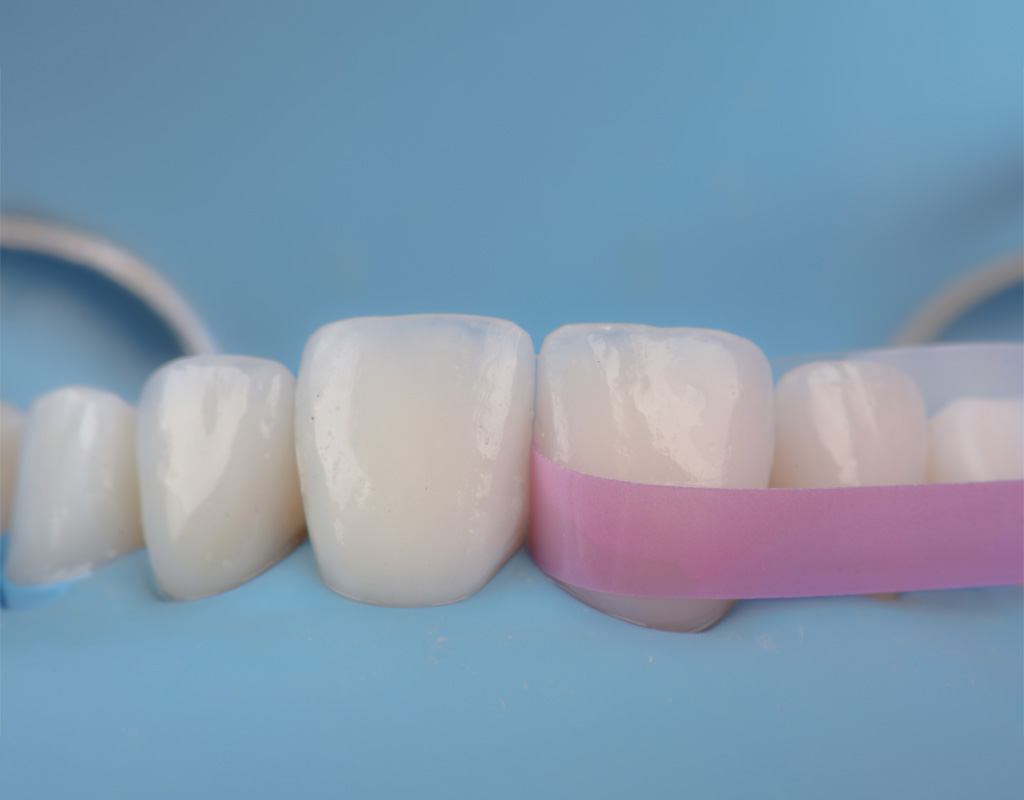
Excited for a brand new smile?
In less than 10 days, the porcelain veneers are ready for the final test. The veneers are fitted, pictures are taken and you have a discussion with your dentist for the last details. The dental technician is present as well to evaluate the new smile.
In case there are corrections to be made, the dental technician will make the adjustments during the same appointment, while you will enjoy a little break with a cup of fresh juice.
Once you approve the final look, the veneers are bonded in place. The veneers are bonded to the teeth with a composite using a very precise and detailed protocol, which guarantees their long-term success.
A check up is booked in one week to control the result and do the final pictures and videos. If you grind your teeth, a nightguard will be recommended in order to protect the veneers during the night. Regular checkups and cleaning are recommended every 6 months.
How is the recovery process?
The recovery process after porcelain veneers is generally minimal, and most people are able to return to their normal activities within a few days. However, here are some things to keep in mind during the recovery process:
• Sensitivity: The teeth may be temporarily sensitive to hot and cold temperatures. This is normal and should subside within a few days.
• Eating and drinking: Avoiding eating or drinking anything that is hot, cold, hard, or crunchy for the first few days after getting porcelain veneers. Sticking to soft foods and beverages.
• Oral hygiene: Brushing and flossing the teeth nortmaly. The dentist may also recommend using a special fluoride toothpaste to help protect the veneers.
• Avoiding biting hard objects: Avoiding biting hard objects, such as ice or hard candy, as this can damage the veneers.
• Follow-up visits: The dentist will schedule follow-up visits to check on the fit and appearance of the veneers and make any necessary adjustments.
It’s important to follow the dentist’s instructions carefully during the recovery process to help ensure the best possible outcome. If there’s any unusual symptoms, such as pain or swelling, the patient should be sure to contact the dentist right away.
How is the recovery process?
The recovery process after porcelain veneers is generally minimal, and most people are able to return to their normal activities within a few days. However, here are some things to keep in mind during the recovery process:
• Sensitivity: The teeth may be temporarily sensitive to hot and cold temperatures. This is normal and should subside within a few days.
• Eating and drinking: Avoiding eating or drinking anything that is hot, cold, hard, or crunchy for the first few days after getting porcelain veneers. Sticking to soft foods and beverages.
• Oral hygiene: Brushing and flossing the teeth nortmaly. The dentist may also recommend using a special fluoride toothpaste to help protect the veneers.
• Avoiding biting hard objects: Avoiding biting hard objects, such as ice or hard candy, as this can damage the veneers.
• Follow-up visits: The dentist will schedule follow-up visits to check on the fit and appearance of the veneers and make any necessary adjustments.
It’s important to follow the dentist’s instructions carefully during the recovery process to help ensure the best possible outcome. If there’s any unusual symptoms, such as pain or swelling, the patient should be sure to contact the dentist right away.

What the patients want to know
Frequently Asked Questions
Yes, porcelain veneers can be used to fix gaps between teeth by filling in the space and creating a more even and aesthetically pleasing smile.
Yes, porcelain veneers can be used to fix chipped or broken teeth by covering the damaged portion of the tooth and restoring its appearance.
Yes, porcelain veneers can change the shape and color of your teeth. They can be used to reshape or resize teeth, as well as to lighten or brighten the color of your teeth.
Porcelain veneers are not permanent, as they can eventually become worn, chipped, or damaged over time. However, they can last for many years with proper care and maintenance.
Getting porcelain veneers requires removing a small amount of enamel from the front of your teeth to make room for the veneers. The teeth preparation is minimal and does not affect the overall health of your teeth.
Getting porcelain veneers is usually not painful, as a local anesthetic is used to numb the area. However, some people may experience some temporary sensitivity or discomfort after the procedure.
Yes, porcelain veneers can be used to fix gaps between teeth by filling in the space and creating a more even and aesthetically pleasing smile.
Yes, porcelain veneers can be used to fix chipped or broken teeth by covering the damaged portion of the tooth and restoring its appearance.
Yes, porcelain veneers can change the shape and color of your teeth. They can be used to reshape or resize teeth, as well as to lighten or brighten the color of your teeth.
Porcelain veneers are not permanent, as they can eventually become worn, chipped, or damaged over time. However, they can last for many years with proper care and maintenance.
Getting porcelain veneers requires removing a small amount of enamel from the front of your teeth to make room for the veneers. The teeth preparation is minimal and does not affect the overall health of your teeth.
Getting porcelain veneers is usually not painful, as a local anesthetic is used to numb the area. However, some people may experience some temporary sensitivity or discomfort after the procedure.
Success Stories
Our Smiles


Porcelain Veneers – Smile 12
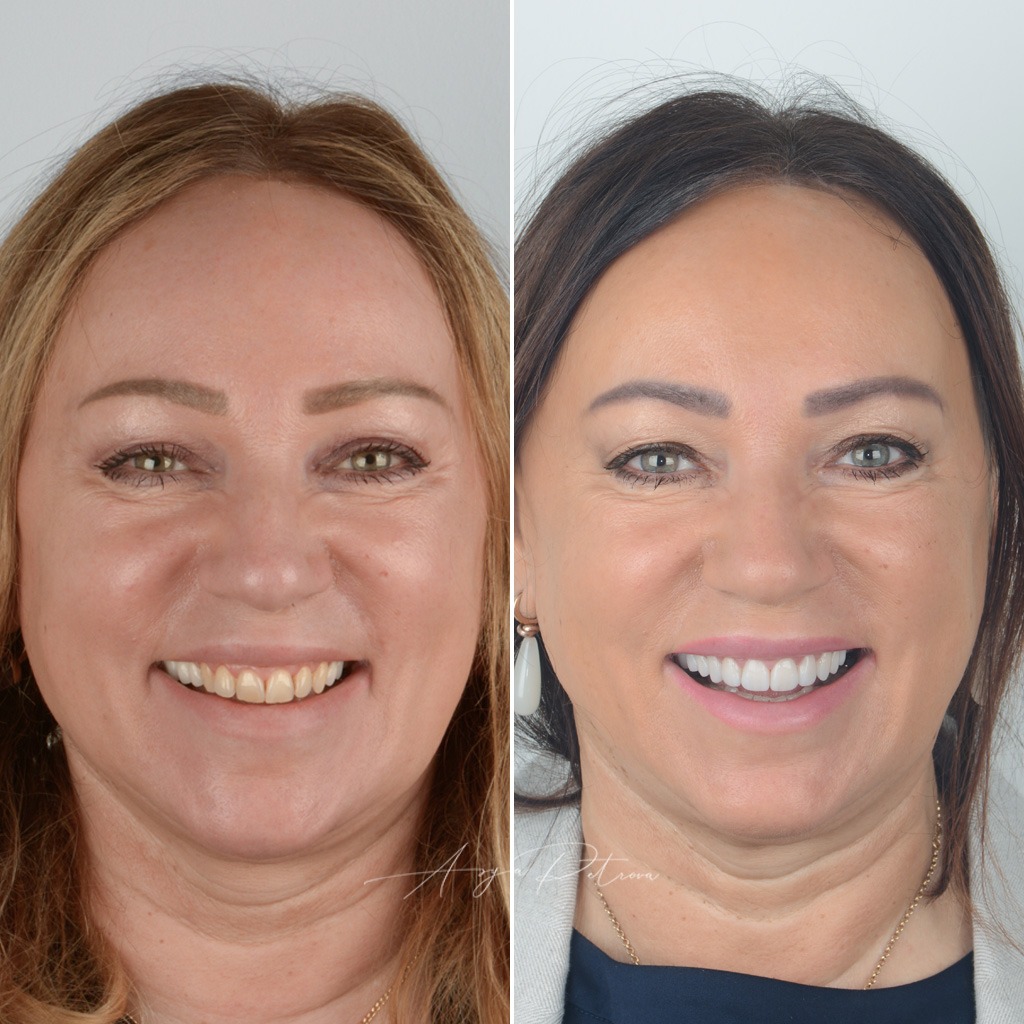
Porcelain Veneers – Smile 11

Porcelain Veneers – Smile 10
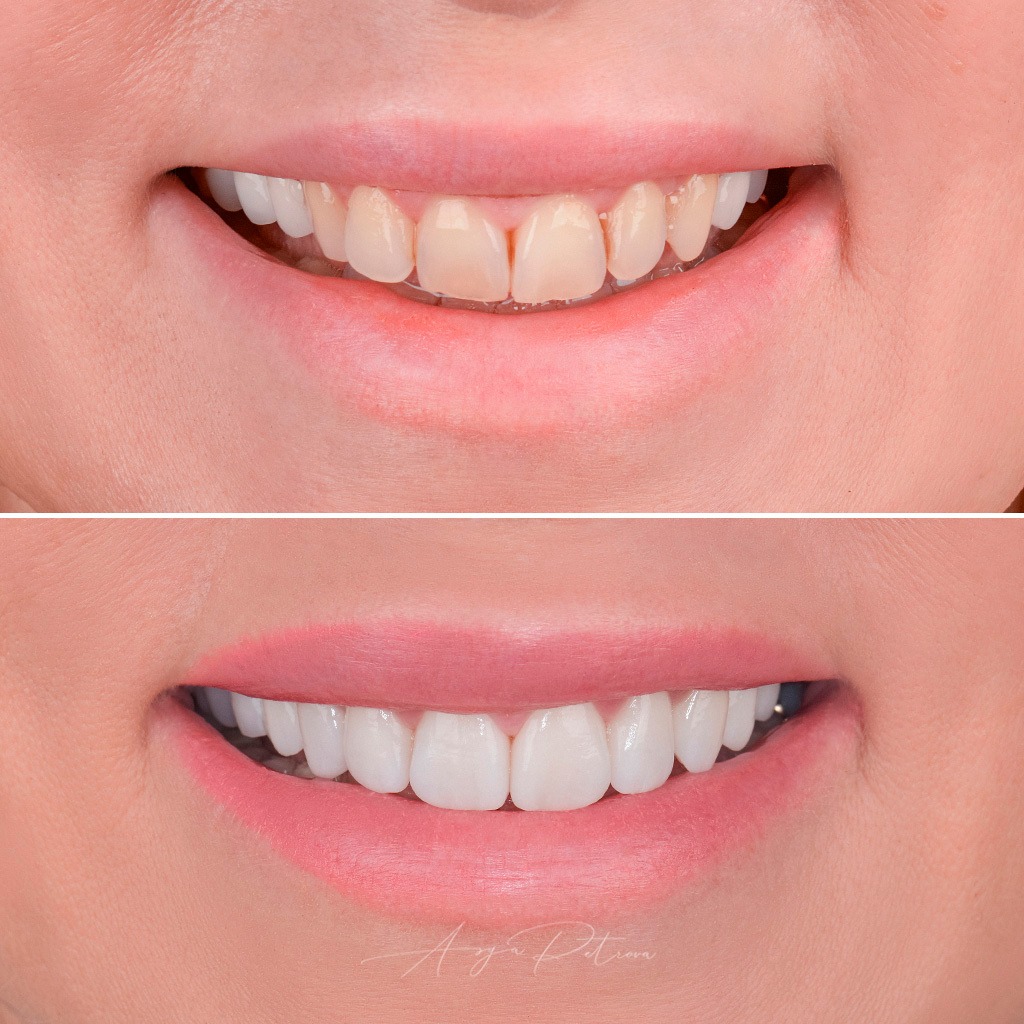
Porcelain Veneers – Smile 9

Porcelain Veneers – Smile 5
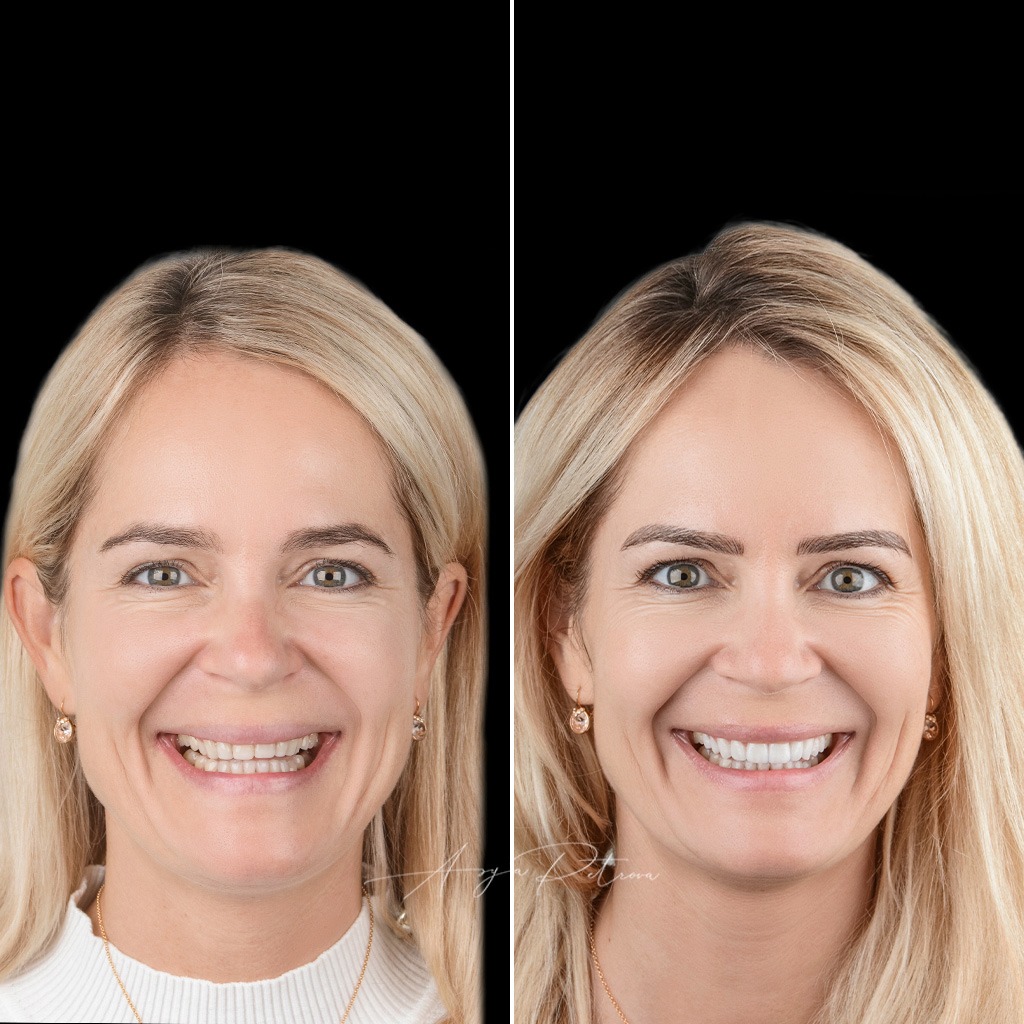
Porcelain Veneers – Smile 3
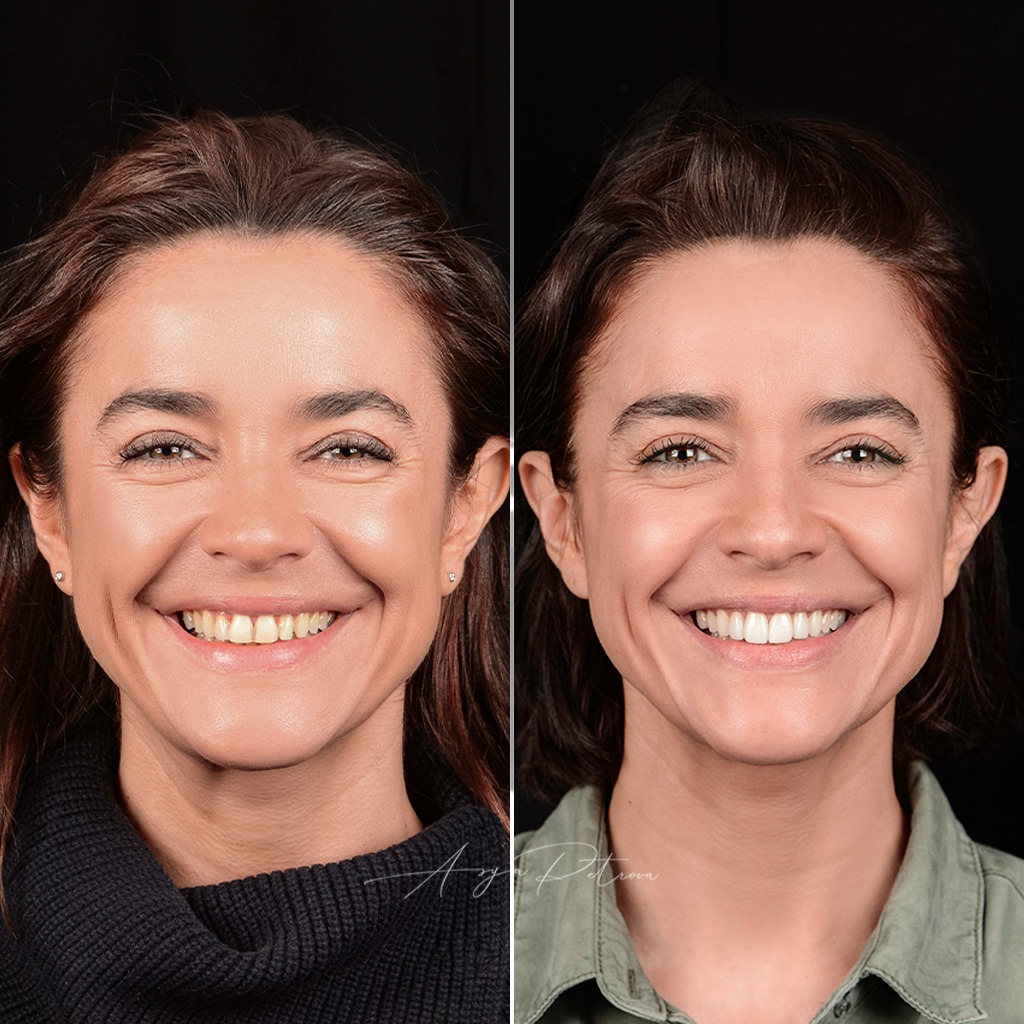
Porcelain Veneers – Smile 2

Full Rehabilitation – Smile 4

Porcelain Veneers – Smile 8
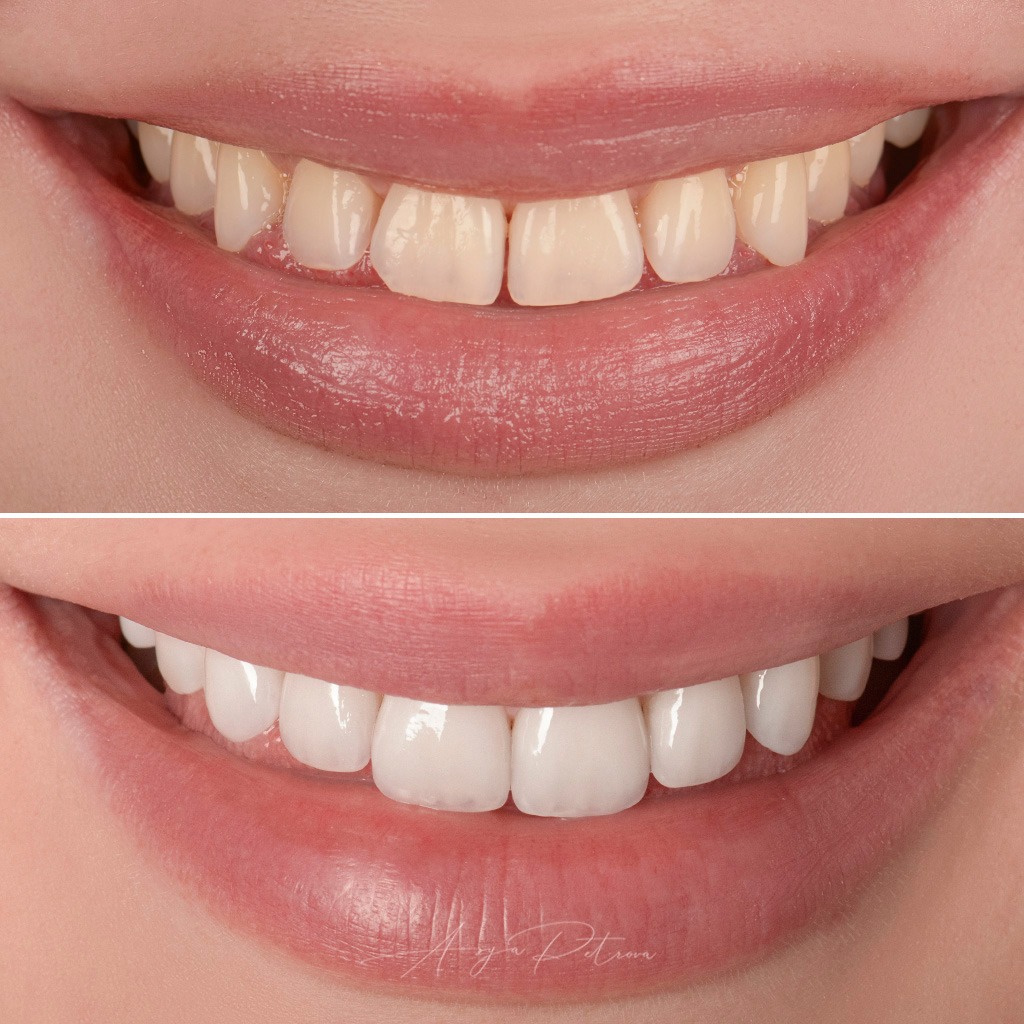
Porcelain Veneers – Smile 7


